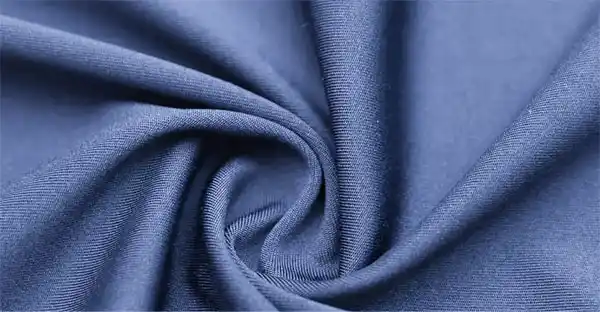Interlock fabric, with its distinctive characteristics and versatile applications, possesses unique qualities that set it apart from other textiles. Recognizing and identifying interlock fabric is essential for designers, manufacturers, and consumers alike. In this comprehensive guide, we’ll explore the various methods and key indicators for identifying interlock fabric, enabling you to confidently discern this sought-after material.manufacturers, and consumers alike.
In this comprehensive guide, we’ll explore the various methods and key indicators for identifying interlock fabric, enabling you to confidently discern this sought-aftermanufacturers, and consumers alike.
What Is Interlock Fabric

Before delving into the identification process, let’s briefly understand the fundamental attributes of interlock fabric:
- Double-Knit Construction: Interlock fabric is created using two sets of yarns knitted into interlocking loops, leading to a double-layered, reversible fabric with a smooth texture and inherent stretch.
- Reversible Nature: Unlike single-knit fabrics, interlock fabric is reversible, meaning both sides of the fabric appear the same. This reversible structure is a hallmark of interlock fabric.
- Substantial Thickness: Interlock fabric is known for its dense, substantial feel, providing excellent coverage and warmth compared to single-knit fabrics.
Visual Indicators of Interlock Fabric

Identifying interlock fabric often begins with visual examination. Several visual cues can aid in recognizing this distinct textile:
Reversible Appearance:
When examining a piece of fabric, observe if both sides of the fabric appear similar. The reversible nature of interlock fabric is a clear indicator of its identity.
Smooth Texture:
Interlock fabric typically exhibits a smooth and uniform texture on both surfaces, devoid of the raised, ribbed texture often seen in other types of knit fabrics.
Thickness and Weight:
Hold the fabric and assess its weight and thickness. Interlock fabric is notably thicker and more substantial compared to single-knit fabrics, imparting a characteristic drape and feel.
Stretch and Recovery:
Gently pull the fabric to gauge its stretch. Interlock fabric offers moderate stretch and excellent shape retention due to its double-knit construction.
Practical Tests for Identifying Interlock Fabric

In addition to visual inspection, practical tests can be instrumental in verifying the identity of interlock fabric. These tests are simple yet effective ways to confirm the fabric’s characteristics:
Stretch Test:
Stretch a small section of the fabric. Interlock fabric will exhibit a balanced stretch in both directions, reflecting its double-knit structure and moderate elasticity.
Reversibility Test:
Turn the fabric over and observe if both sides present an identical appearance. If the fabric is truly interlock, both sides should be indistinguishable from each other.
Light Test:
Hold the fabric up to light. Interlock fabric will offer minimal transparency due to its dense, double-knit construction, distinguishing it from lighter single-knit fabrics.
By performing these practical tests, you can confidently discern whether the fabric under scrutiny possesses the defining features of interlock fabric.
How to Identify Interlock Fabric?

While pure interlock fabric is commonly composed of cotton, polyester, or other specific fibers, it can also be blended with other materials. Identifying interlock fabric blends involves considering the following factors:
Fiber Composition:
Review the fabric’s composition label to identify the precise blend of fibers. Common interlock fabric blends include cotton-polyester blends, which combine the characteristics of both fibers.
Hand Feel:
Assess the tactile sensation of the fabric. A fabric blend may exhibit a combination of qualities from the different fibers, such as the softness of cotton and the durability of polyester.
Performance Characteristics:
Consider the intended use of the fabric. Blended interlock fabric may offer enhanced breathability, moisture-wicking properties, or tailored texture depending on the specific blend.
Are There Specific Color Patterns Common in Interlock Fabric
Interlock fabric is known for its versatility, and it can be found in a wide range of color patterns and designs. It is commonly available in solid colors, enabling it to be used as a base fabric for a variety of garment types.
Interlock fabric may also feature patterns such as stripes, dots, or simple geometric designs. The specific color patterns in interlock fabric can vary based on the manufacturer, designer, and intended use of the fabric.
Therefore, it’s essential to explore various fabric options to discover the diverse color patterns available in interlock fabric manufacturers, designer, and intended use of the fabric. Therefore, it’s essential to explore various fabric options to discover the divermanufacturer, designer, and intended use of the fabric.
Application-Specific Identification
Identifying interlock fabric can also be application-specific, as it is widely used in various contexts:
Apparel and Activewear:
Garments made from interlock fabric, especially sportswear, often exhibit a combination of visual cues and performance attributes that align with the fabric’s identity.
Home Textiles:
When identifying interlock fabric used in home textiles, such as bedding or upholstery, consider factors such as durability, texture, and reversible appearance.
By considering the specific application and context in which the fabric is used, you can further refine your ability to identify interlock fabric accurately.
Conclusion
Armed with an understanding of the visual indicators, practical tests, and application-specific considerations for identifying interlock fabric, you are equipped to confidently discern this unique textile. Whether you’re a designer seeking the perfect fabric for a project, a manufacturer ensuring material authenticity, or a consumer making an informed purchase, the ability to identify interlock fabric enriches your understanding of textiles and elevates your fabric selection process.manufacturer ensuring material authenticity, or a consumer making an informed purchase, the ability to identify interlock fabr
In conclusion, the ability to identify interlock fabric offers valuable insight into the world of textiles, enabling greater precision in selecting, designing, and appreciating the distinctive qualities of this versatile and enduring material.
